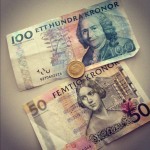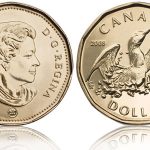Gold prices climbed this week, as worldwide tensions stoked safe haven demand, with Iraq, Gaza and Ukraine again in the spotlight. US stocks and the dollar logged minor gains, while SPDR assets continued to drop.
Gold futures for delivery in December dropped 0.11% on Friday, closing at $1 311.0 per troy ounce, about 1.4% up for the week. Weekly high and low were at, respectively, $1 324.3 on Friday, which was also a three-week peak, and $1 283.3 per barrel on Tuesday. The contract dropped 0.8% last week.
Silver for September closed the week 2.2% lower at $19.903 per troy ounce, while palladium was down 0.4% at $860.50. October platinum added 0.8% to close at $1 477.45.
Middle east tensions
Iraq was again in the spotlights of markets, after US President Barack Obama announced the US will be carrying out air strikes on militants of the Islamic State (IS). President Obama dismissed the possibility of sending in ground forces, saying he would not let the US be dragged in another war in Iraq. Strikes began late on Friday, and have continued through the weekend.
Also, President Obama said the US would strike on the Islamists if they march on Baghdad, and if they maintain their blockade of Mount Sinjar, where tens of thousands of civilians fled to from the IS. In addition to military support, Mr Obama said the US would provide humanitarian air drops to the civilians, who were left without food, water or any sanitation. 40 children were already reported to have died in the mountain.
“It’s a catastrophe, a tragic situation: tens of thousands of terrified people are being displaced as we speak,” said Joseph Thomas, the Chaldean archbishop of the northern city of Kirkuk.
Elsewhere, the conflict in Gaza flared back to life, after the 72-hour truce expired without an agreed extension late on Thursday. Renewed rocket attacks and Israeli air strikes marked the resumption of military actions.
Israel had proposed an unconditional extension to the ceasefire, demanding a full demilitarization of Gaza in order to lift the suffocating blockade of the enclave. Hamas declined the offer, saying its fighters are ready for a “long war”.
Since the conflict sparked back to life exactly one month ago, more than 1800 Palestinian, mostly civilians, and 67 Israelis have died.
Russian counter-sanctions
Russia responded to Western sanction by introducing its own limitations to foreign trade on Thursday. Russian Prime Minister Dmitry Medvedev said Russia bans the import of meat, fish, dairy products, fruit and vegetables from the US, EU, Canada, Australia and Norway for a period of 1 year.
The counter-sanctions were ordered by Russian President Vladimir Putin on Wednesday and is a retaliation to the most-recent and toughest yet Western measures, which targeted the Russian sectors of the defense, energy, high-tech and finance.
The move comes as NATO warned of a possible Russian incursion in Ukraine, in light of fresh battle-ready troops massing near the border.
Nato chief Anders Fogh Rasmussen said Ukraine’s freedom and future were “under attack,” promising support against Russian “aggression”, the BBC reported. Russia “should not use peace-keeping as an excuse for war-making.”
ECB meeting
The European Central Bank (ECB) kept rates unchanged after its meeting this week, with benchmark lending interest at 0.25% and deposit rate at -0.10%. A negative deposit rate means that the ECB charges commercial banks for keeping their money in deposit, and is a policy measure aimed at spurring lending, and liven overall economic activities. The decision was largely expected, though the euro did log slightly lower value after the announcement and the following speech.
The euro has a very strong opposite correlation with the US dollar, meaning a weakness for the euro translates into strengthening for the dollar, which pressures the dollar-denominated gold.
Meanwhile, Eurozone retail sales were logged to have increased more than expected on an annual basis, though retail PMI was below the “50” mark, meaning a contraction for the retail sector. Germany also logged slowing industrial production and factory orders. Elsewhere, the US scored a nine-year high services PMI and improving nonfarm productivity.
Stocks, dollar
The US Dollar Index, which measures the greenback’s performance against six other major currencies, closed some 0.2% higher this week at 81.46.
Meanwhile, US stocks logged minor gains this week. Dow 30 closed the week about 0.4% higher, Nasdaq 100 added 0.3% and S&P 500 was up 0.3%, as trading on Wall Street closed on Friday.
Elsewhere, assets at the SPDR Gold Trust, the largest exchange-traded gold-backed fund, dropped 2 more tons on Friday, upping the weeks losses to some 6 tons, and reaching the lowest level in more than a month.
Next week
Next week will start off with a gauge on German economic sentiment, ahead of CPI, GDP and industrial production figures for the Eurozone. The US will post key readings on PPI, retail sales and industrial production, as well as University of Michigans preliminary reading on consumer sentiment.





